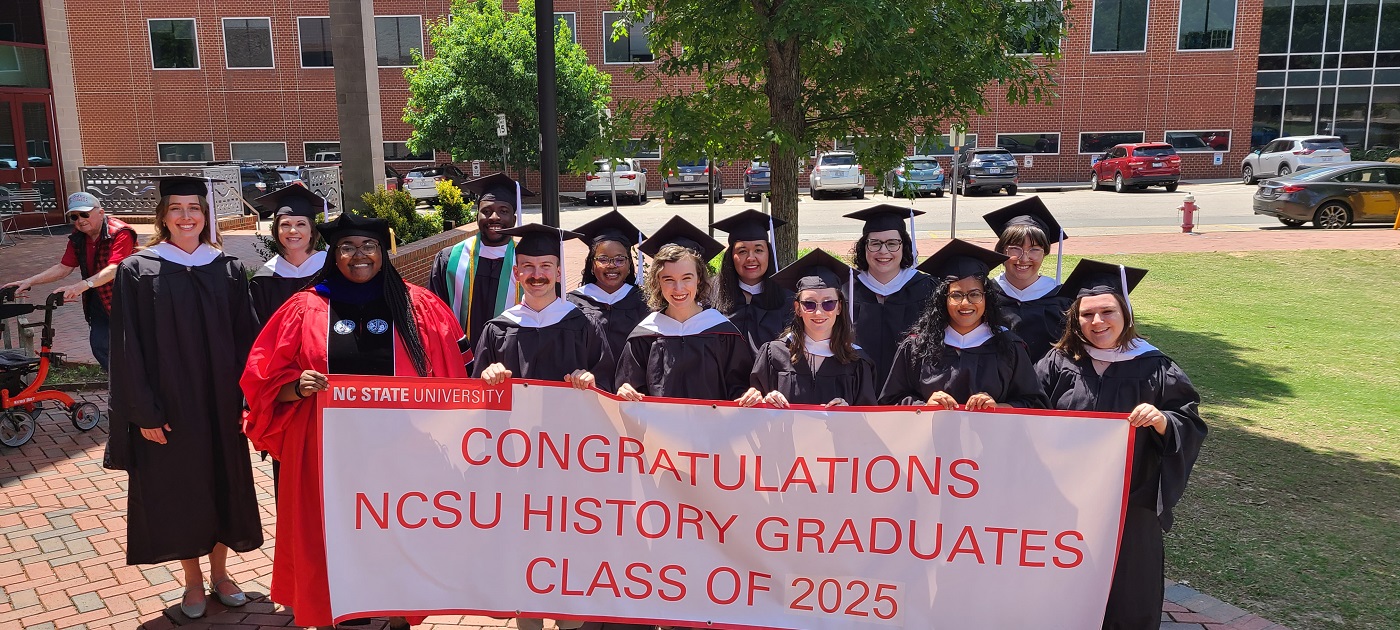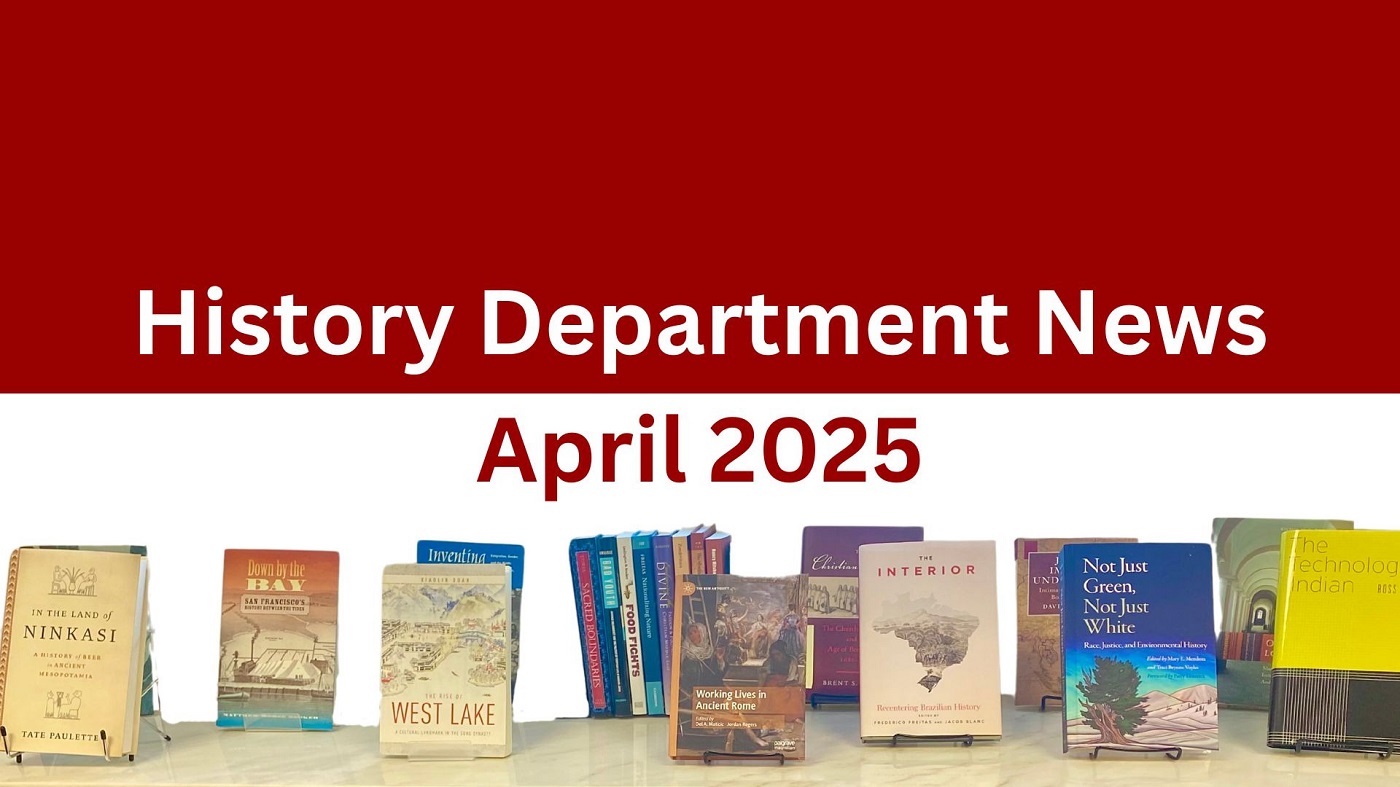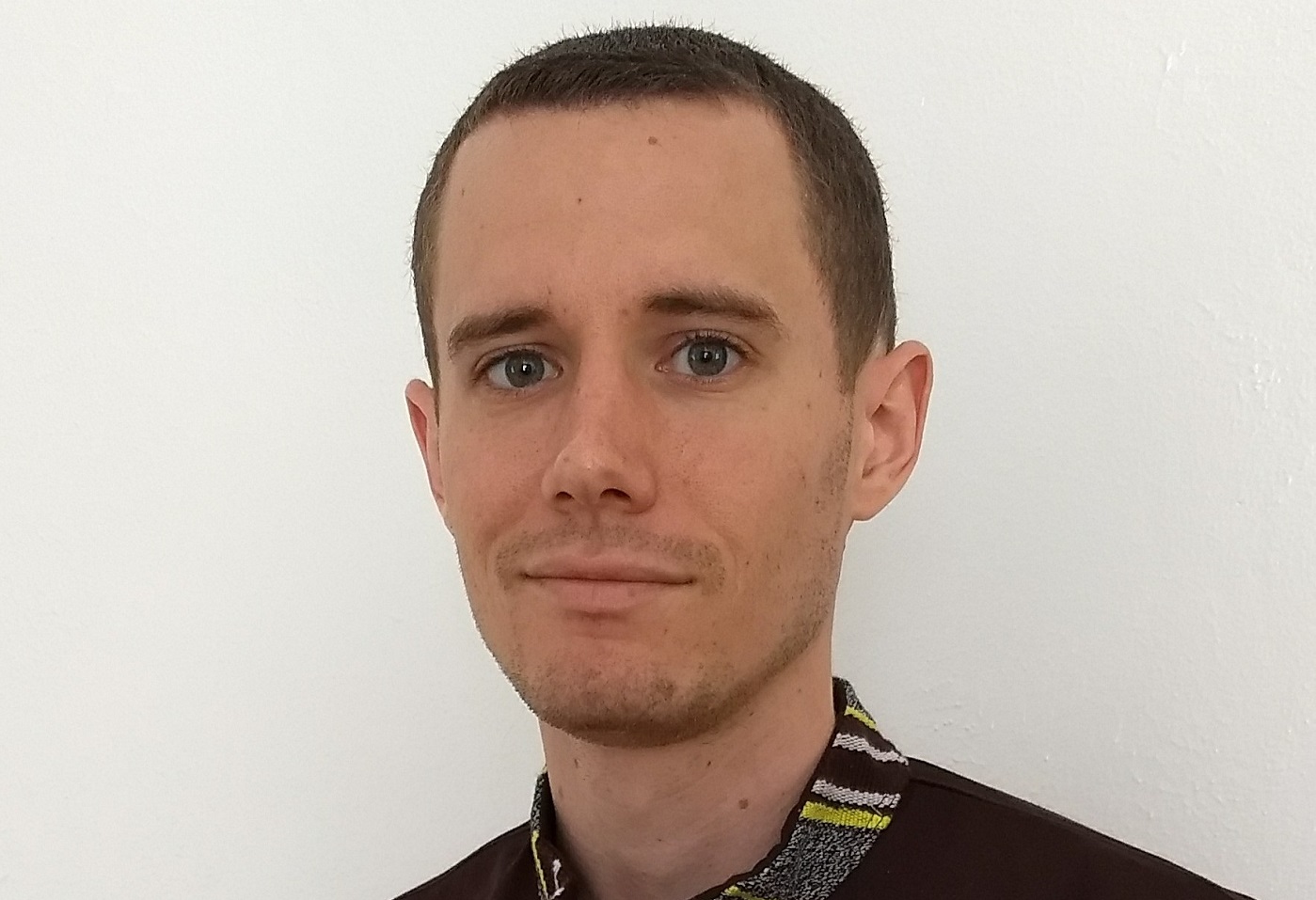Meet the Faculty: An Interview with 2023-24 NEH Fellowship Winner, Professor David Ambaras
Dr. David Ambaras, Professor of History, whose research explores the social history of Japan and its world, particularly through a focus on mobility, marginality, and transgression, recently received an NEH fellowship for 2023-24 to pursue a digital book, “Maritime Connections and Japanese World-Making in the 1950s-60s.”

Tell me about the project that your NEH fellowship is funding.
I examine Japan’s connections to the world through the histories of ports, shipping, port labor and seafarers in the 1950s and 60s. This was a period that set the stage for the widespread use of container ships and for the capitalist “globalization” of more recent decades. Japan had most of its infrastructure destroyed during World War II and it had to rebuild capacity at the same time it was emerging as a postwar economic powerhouse that depended on maritime transportation to grow. Japanese port officials and experts wanted to be leaders in the world and help other countries develop their infrastructure while also constantly modernizing Japan’s own. The geopolitical context is, on the one hand, the Cold War, but also decolonization and Afro-Asianism. Depending on who you’re looking at, the stakes are very different. For example, Japanese port administrators and port business leaders are aligning themselves with First World capitalist internationalism and trying to build cooperation among ports and provide technological assistance to the developing world, because that’s how they believed you could promote world trade and world peace and prevent communism from spreading. But dockworkers are in a very different position where they feel they are getting squeezed by exploitative labor and political regimes, and many of them are aligning themselves with fellow Afro-Asian dockworkers who are also getting squeezed and fighting for independence from foreign domination.
Do they have labor unions?
They do have labor unions and the labor unions are in communication with labor unions elsewhere. The International Longshore and Warehousemen’s Union (ILWU, now called the International Longshore and Warehouse Union) on the west coast of the United States is a powerful union and they are cooperating with the Japanese dockworkers to try and organize dockworkers across the Asia-Pacific region.

Where are you finding information for your research?
Japan. I just spent two months in Japan collecting a stack of primary sources and am working through those. I also went to San Francisco in the spring to the ILWU archives and spent a week there. I’ve also made use of a lot of English-language materials that are available through international interlibrary loan or online. For example, during COVID, when I couldn’t travel, I scoured the internet for whatever material was available using TripSaver. They’re continuing to get me the most obscure things right now.
Why did you decide to do “Maritime Connections and Japanese World-Making in the 1950s-60s” as a digital book?
I co-direct a digital humanities project that we previously received NEH funding for, and that showed me that there are different ways to narrate history. We’re all sort of trained to do a traditional book, but I think that what happens when you write a traditional book, you find there are a lot of important things that you have to leave out. And you can’t always show the connection across the different things that you’re doing within the book. But the digital medium allows us all these different kinds of opportunities – for branching paths, hyperlinks, tags, and labels and mapping. And so I want to make use of those affordances to see what I can do differently with this story.
Your research focuses on the social history of Japan and its world particularly through a focus on mobility, marginality and transgressions. Tell me what you mean by that?
Generally it means taking Japan as something beyond simply a bordered territorial nation-state and showing how it’s connected in various ways to what’s happening elsewhere, and how these processes are shaping each other. Regarding mobility – I’ve always looked at people on the move and now I’m looking at people on ships and things that are moving, as well as people handling things in motion. Regarding marginality – I’ve looked at juvenile delinquents. I’ve looked at women wanting to get rid of unwanted births. I’ve looked at women moving back and forth between Japan and China. Now I think in some ways, dockworkers are kind of a marginal group, socially and physically. Transgression relates to people crossing borders, crossing boundaries. That’s been a key part to what I do but now I’m scaling it up to think about commodities and all kinds of other ways in which things are crossing boundaries.
 Theoretically, over the last few years, I’ve gotten more interested in geography. I’m thinking a lot about scale and how we take categories like the global or the national or local for granted, but in fact, they’re not real unless we think about them and act on them. And so, how does something like the global get formed is a question I’m thinking about here. How does the flow of commodities, how do ideas about regions, how do international conferences, how do labor solidarities all shape the ways in which people understand the globe and pursue their own interests? When dockworkers are saying they need to have these global connections, it’s not just to have global connections – its to get better conditions for themselves in the places they work and live, and depending on the context, to strengthen their own nations. The same applies to port managers, shipping company executives, and others – they’re using scale to achieve multiple objectives.
Theoretically, over the last few years, I’ve gotten more interested in geography. I’m thinking a lot about scale and how we take categories like the global or the national or local for granted, but in fact, they’re not real unless we think about them and act on them. And so, how does something like the global get formed is a question I’m thinking about here. How does the flow of commodities, how do ideas about regions, how do international conferences, how do labor solidarities all shape the ways in which people understand the globe and pursue their own interests? When dockworkers are saying they need to have these global connections, it’s not just to have global connections – its to get better conditions for themselves in the places they work and live, and depending on the context, to strengthen their own nations. The same applies to port managers, shipping company executives, and others – they’re using scale to achieve multiple objectives.
Have you been able to talk to people who were actually working as laborers from the 50s and 60s?
No, but when I was in Japan this summer, I arranged to meet a scholar who works on the port of Kobe in the 70s and 80’s, a slightly later period. We hit it off immediately — there aren’t a whole lot of people who share our interests. He’s been in touch with the dockworkers’ union in Kobe, and that has allowed him access to different things. So through him I’ve been able to access some rare, unique materials, including first-person accounts, but not people directly.
You said not a lot of work has been done on this subject?
There’s been some work on different parts of my overall subject, most recently on dockworker internationalism, but most of it does not focus on Japan. I think it leaves a lot for me to do in terms of thinking about Japan in the Asia-Pacific and beyond. And that’s only one part – that’s really about the labor side, not the management side or the infrastructure side. What I’m really trying to do is bring together these different fields that have not really been brought together. And less has been written about these maritime spaces than about developments on land. I think that’s what I’m hoping to achieve.
What did you have to put together for your NEH application?
I had to put together a thousand-word narrative that summarized the project and explained its methodological and historiographical significance, and to provide a short sample bibliography and a feasible plan of work. I also had to provide letters of recommendation from colleagues. I had an NEH fellowship before, so I kind of knew what was involved. I didn’t expect to get it this time, because I felt like the project was still fairly new. But when I talk to people, there seems to be an excitement about it.

And how long have you been working on this project?
On and off – I did get stuff done during COVID. I think the trigger for this project was when I was finishing my last book, Japan’s Imperial Underworlds: Intimate Encounters at the Borders of Empire (Cambridge University Press, 2018). For the epilogue, I was trying to think about how Japanese people imagined the South China Sea after 1945. In the book, I had written about Japanese in the South China Sea prior to 1945. And then of course, Japan loses its Empire and gets occupied. They lose that ability to be “adventurers.” I thought – so how are people talking about this now? What are they thinking about? I thought it’d be good to look for movies, so I did a search for movies with the word sea or ocean in the title in Japanese. One movie that came up was a 1957 fictionalized account of a seafarers’ strike in Tokyo where the crew of the ship that comes in are Afro-Asian, the dockworkers are Japanese, and the officers on the ship are white. The crew goes on strike against the white officers for issues of corruption. The Japanese dockworkers have to pick a side and the main character comes to sympathize with the Afro-Asian crew members. The film even splices in newsreel footage of Egyptian President Nasser during the 1956 Suez Crisis. So this 1957 Japanese film is saying, Japanese workers (and Japan), pick your side in the current wave of decolonization. And I thought this is really interesting. I’ve never seen anybody write about this. So that became the starting point for my research. And I found there’s just a lot of material that nobody or few people have really written about. So it’s just it’s gone from there. But then I found that to do this, I have to actually understand ports and port economics. It’s a challenge.
Will there be more trips to Japan?
Not during this year. I can foresee I may have to take some short research trips elsewhere. I don’t think I need to go back to San Francisco. There are things in various places and I have to figure out whether I really need them or whether I can get somebody else to look at them and possibly scan them for me. There might be material in Hawaii, in Amsterdam, and in the UK, and in other places in the continental US. Right now, I’ve just got a pile of things that I’m working through.
When do you anticipate having the book completed?
I’d like to get this done by 2025 if possible.
You can learn more about Dr. David Ambaras HERE.
- Categories:


